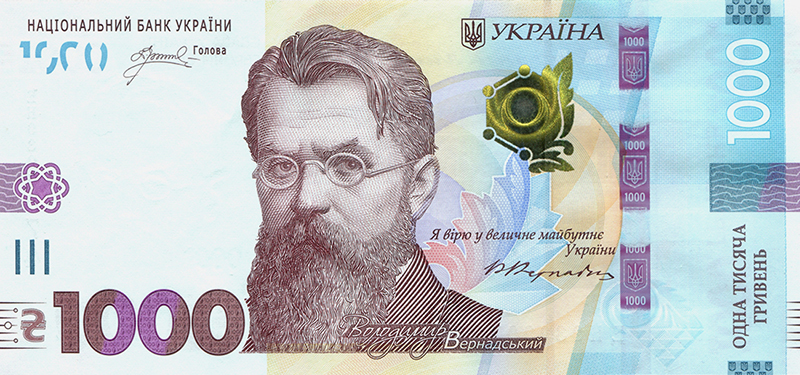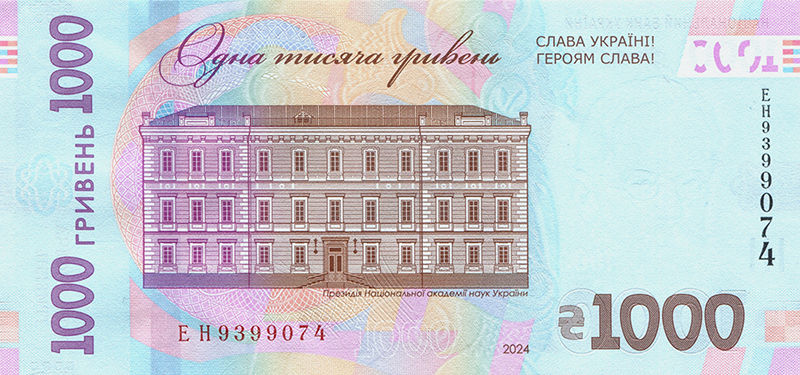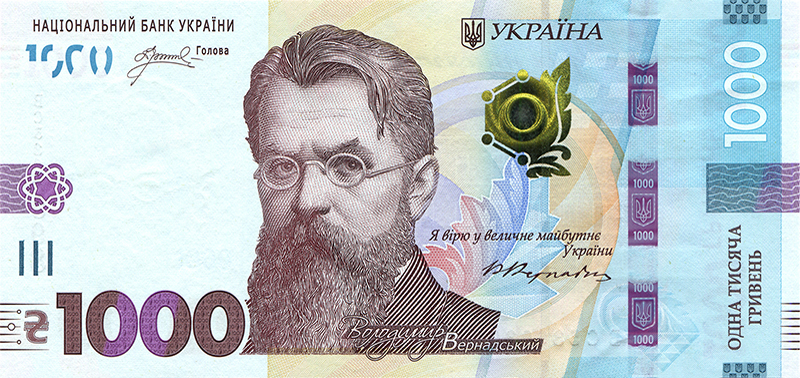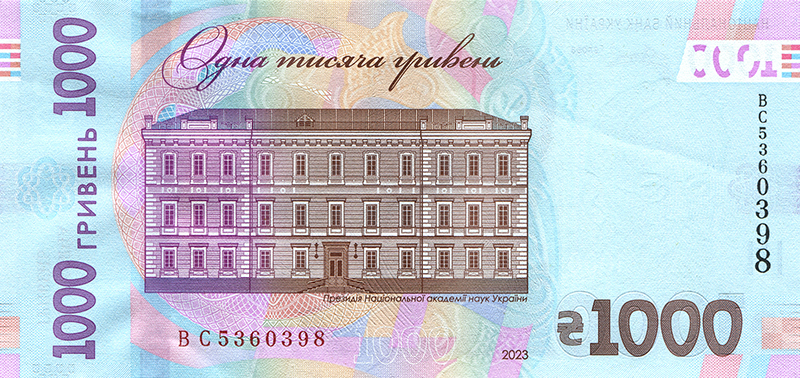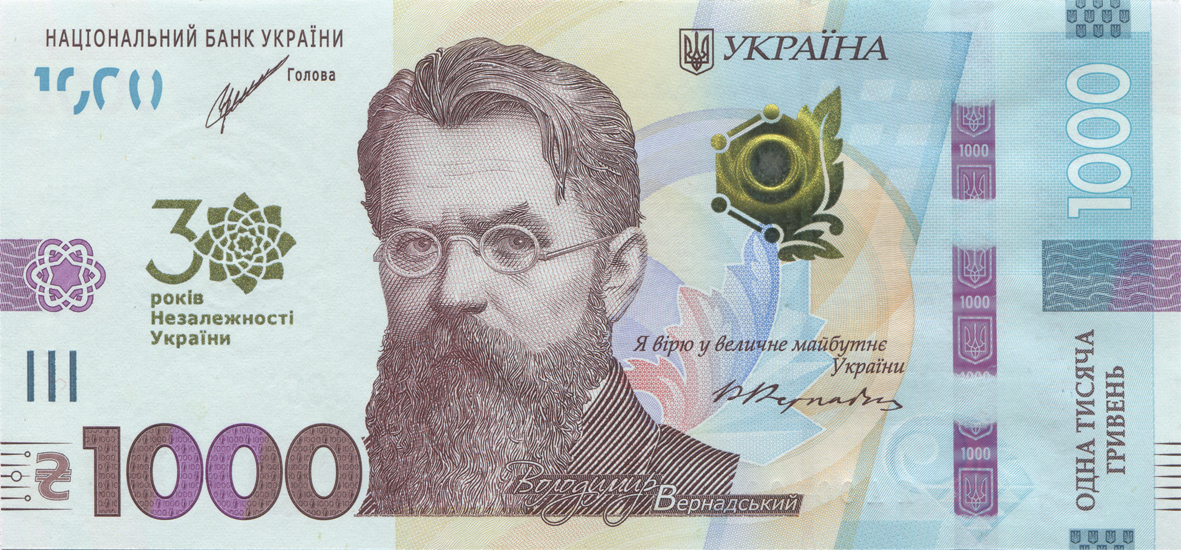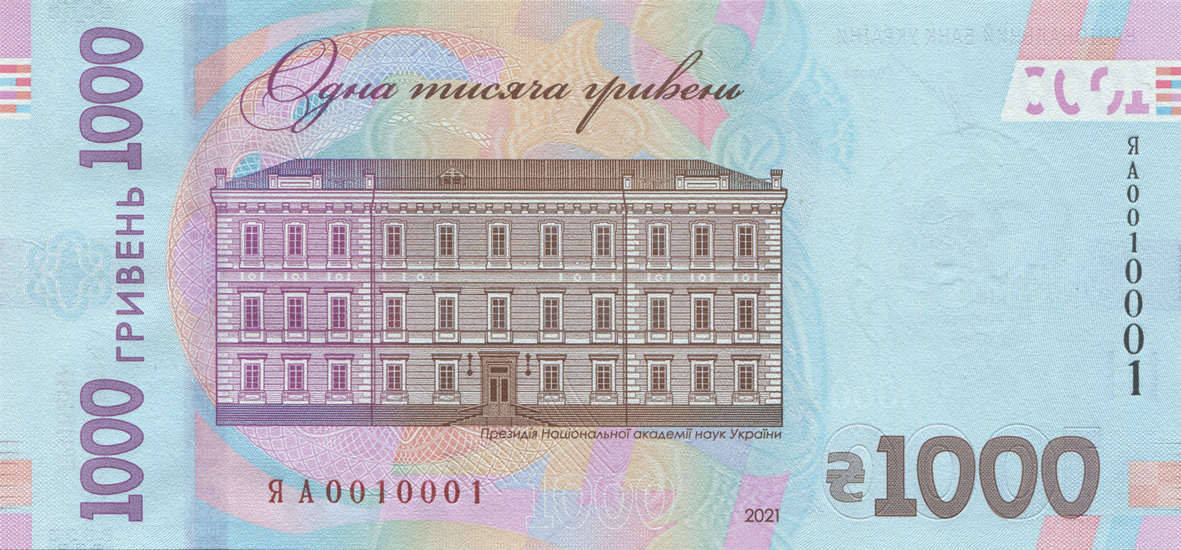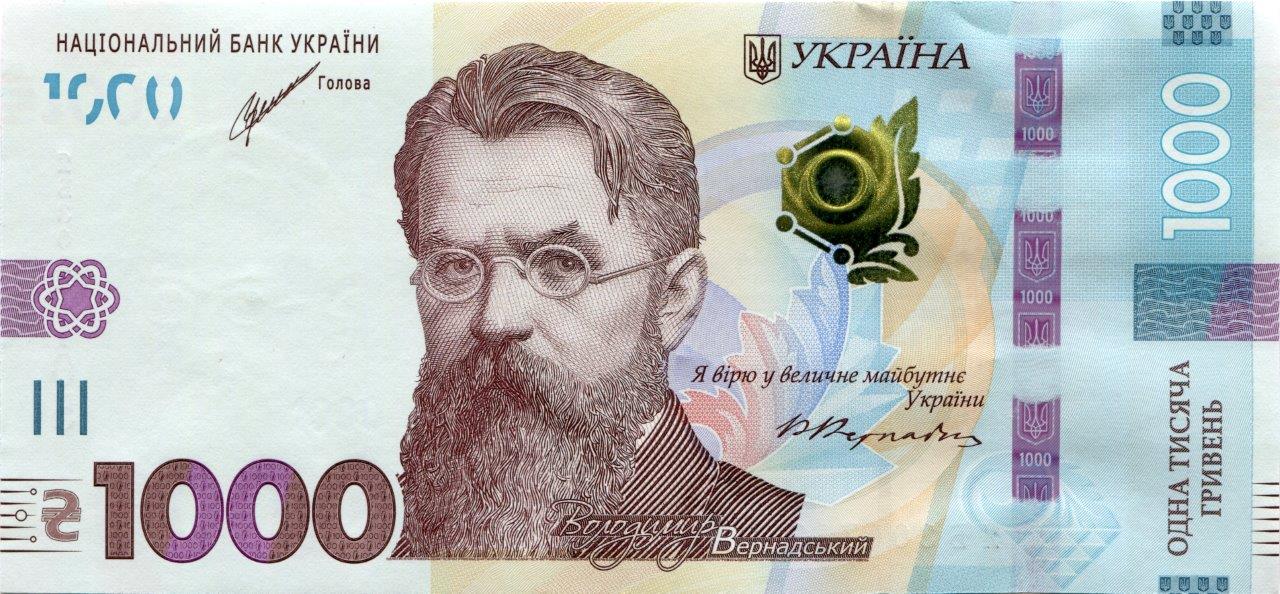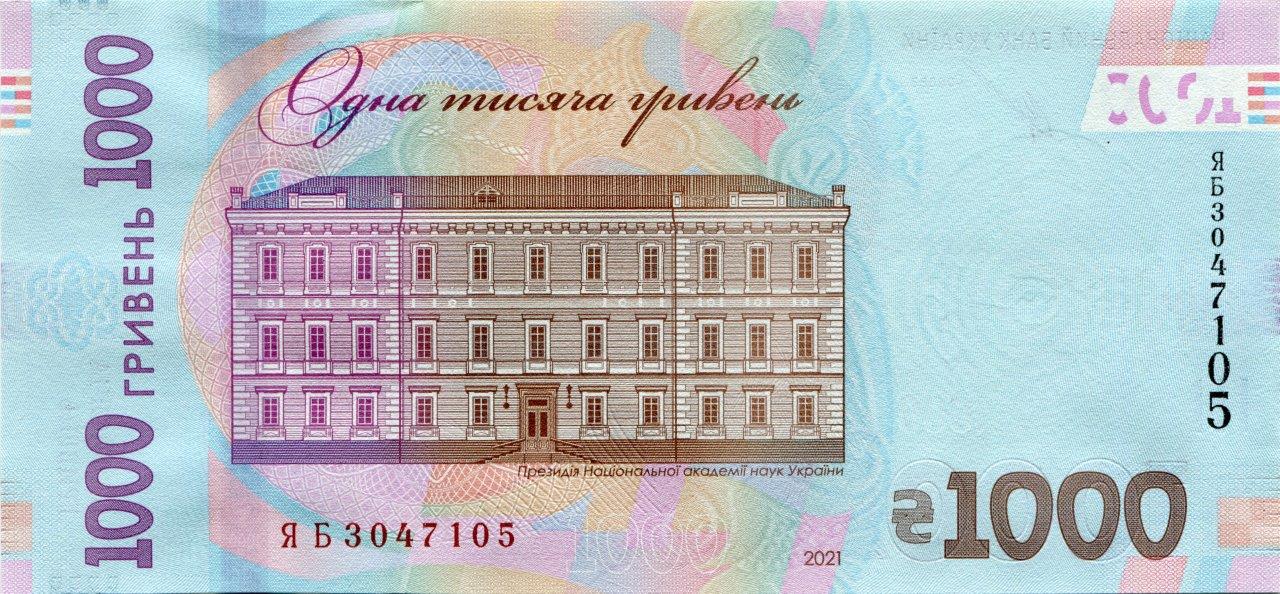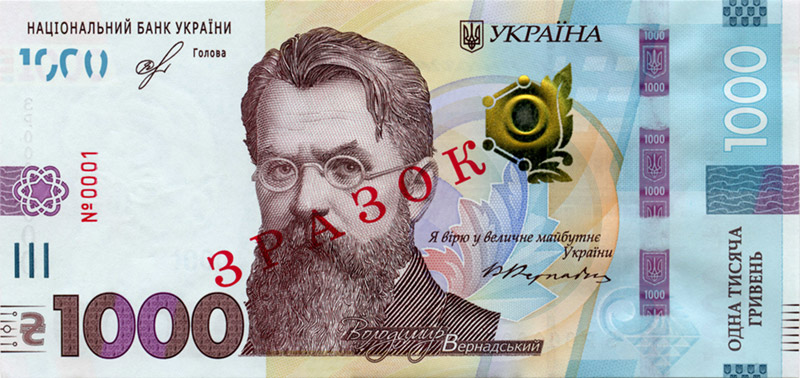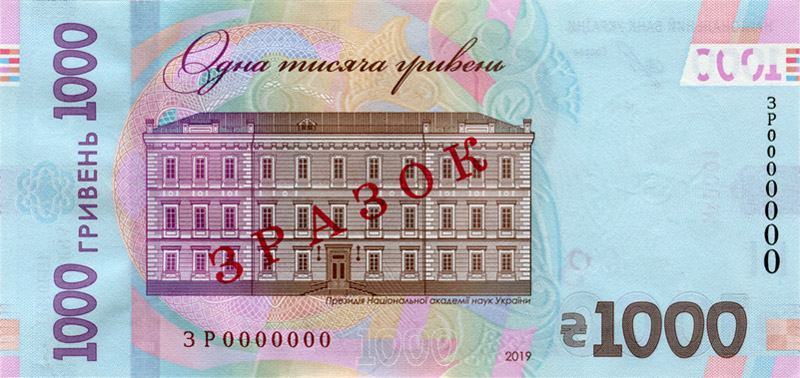The front of the note features a portrait of Volodymyr Vernadskyi
Volodymyr Vernadskyi (1863 – 1945) was a famous Ukrainian scientist, philosopher, natural scientist, and the founder of the scientific fields of geochemistry, biogeochemistry and radiogeology. He was also one of the founders and the first president of the Ukrainian Academy of Sciences, which was established in 1918.
The back of the note features the Presidium of Ukraine’s National Academy of Sciences
The Presidium of Ukraine’s National Academy of Sciences was built in the 1850s to a design by architect Alexander Beretti. In 1892, a third floor was added to the building. Its facade features rustication and an attic decorative element with a cast-iron grid. The building was transferred to the Academy of Sciences in 1918.
Security features
The banknote is printed on special tinted light-blue paper, which is the dominant color of the banknote.
The paper contains a local multi-tone watermark, light watermark element, security threads and security fibers.
1. Watermarks (visible when the banknote is held up to the light): a multi-tone watermark is a repeated Volodymyr Vernadskyi’s portrait formed by the paper internal texture in different tones; light watermark element represents denomination figures (placed horizontal in the lower right part of the multi-tone watermark).
2. SPARK element is the optically-variable image of a composition made of conventionalized fragments of a crystalline grid and a floral ornament, which has dynamic light effects. When the banknote is tilted, some areas of the image gradually change color from gold to jade green.
3. Security thread - the polymer strip fully embedded in the paper, with the images of “1000 ГРН”, the trident and underlined numerals “1000” indicating the denomination, which are visible (normal and reverse images) through the magnifying glass.
4. Window security thread is a magenta thread partially embedded in the paper and has pronounced dynamic light effects. There are images of the figures indicating denomination and the trident on the thread. When the banknote is tilted, the background image moves in the opposite direction.
5. Latent image (numerical indication of denomination): When the banknote is held at a sharp angle to the light at eye level, the denomination numerals become visible and are dark against light background if looked at from the long side or light against dark background if looked at from the short side.
6. Relief images are graphic images on the banknote front which as a result of raised printing feel rough to the touch: the sign for the partially sighted, fragment of the portrait, inscriptions and images.
7. See-through element - the image of the denomination numerals that supplement each other and form the full image when the banknote is held up to the light.
8. Orloff printing - special printing ensuring the abrupt transition of one color into another without ruptures and displacements of the image elements.
9. Rainbow printing - special printing ensuring the gradual transition of one color into another without ruptures and displacements of the image elements.
10. Microtext - repeated inscriptions that can be read only with magnifying glass.
11. The serial numbers are printed in letterpress printing: horizontally in the red ink and vertically (with the changing height of the figures) in the black ink.
12. Copy-evident pattern - thin lines of different geometric shapes that form a moire pattern when copied or scanned.









